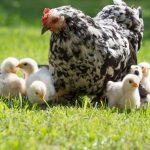 Buzzing bees, fluttering butterflies, and zipping hummingbirds are super-fun to watch as they flit and zoom from flower to flower, but these pollinators do more than just entertain. They actually help fuel life on this planet. The cucumbers in your salad, the berries in your yogurt, the apples in your pie—none of those would exist without the work of pollinators. These vital creatures will gladly make your yard their home when you roll out the welcome mat with a pollinator garden.
Buzzing bees, fluttering butterflies, and zipping hummingbirds are super-fun to watch as they flit and zoom from flower to flower, but these pollinators do more than just entertain. They actually help fuel life on this planet. The cucumbers in your salad, the berries in your yogurt, the apples in your pie—none of those would exist without the work of pollinators. These vital creatures will gladly make your yard their home when you roll out the welcome mat with a pollinator garden.
Check out our vital tips to make your home a pollinator hotspot.
1. Mix it up.
Different pollinators respond to different colors. Bees prefer blue, yellow, white and purple, while hummingbirds zoom to red-toned blooms first. Butterflies favor red and purple tones. Fill your yard with flowers in a rainbow of hues, and choose plants that bloom at different times so you’ll have blossoms throughout the growing season. Planting flowers with a variety of bloom shapes—some tall, some short, some wide, some narrow— will help draw a diverse group of pollinators, too.
2. Create drifts.
Many pollinators are nearsighted, so it’s easier for them to find flowers when there’s a large bunch. Arrange your plants in groups of 3 or 5 to mimic nature’s planting style and provide a can’t-miss target for pollinators.
3. Add water.
Like any living creature, pollinators need water to survive. Include a shallow bird bath, fountain, or pond to give pollinators a place to sip.
4. Provide shelter.
Pollinators need places to hide and raise their young, such as a hedge, a compost pile, a dead tree, unmowed grass, or unmulched soil. Be sure to provide just such a retreat near your pollinator garden.
5. Try trees.
Include trees and shrubs in your pollinator plans. A maple or crabapple tree in flower literally buzzes with activity during bloom time. Shrubs like viburnum, butterfly bush, spirea, and summersweet offer nectar-laden flowers that pollinators can’t resist.
6. Include natives.
Include at least a few native plants (that means native to the U.S.) in your pollinator garden, as they may be less prone to pests and disease than imported varieties. Some examples include tall liatris, purple coneflower, swamp milkweed, coreopsis, manzanita, and California poppy. Check with your local extension office to learn about native plants for your area, or visit the Xerces Society for regional native plant lists.
7. Let herbs bloom.
Once you’re done harvesting your favorite culinary herbs, allow them to burst into bloom. Pollinators will mob them! Bees are particularly fond of mint, oregano, basil, dill, fennel, and rosemary flowers, so why not indulge them? (Helpful hint: Get a jumpstart at planting time by planting young herbs from Bonnie Plants® instead of growing from seeds.)
8. Use pesticides wisely.
If you must use a pesticide in your pollinator garden, do so with care. Rely on predator insects like ladybugs and wasps if you can. If you must use a pesticide, use it when bees aren’t active (such as in early evening), don’t spray plants when they’re in bloom, and be sure to follow all of the directions on the product label.


